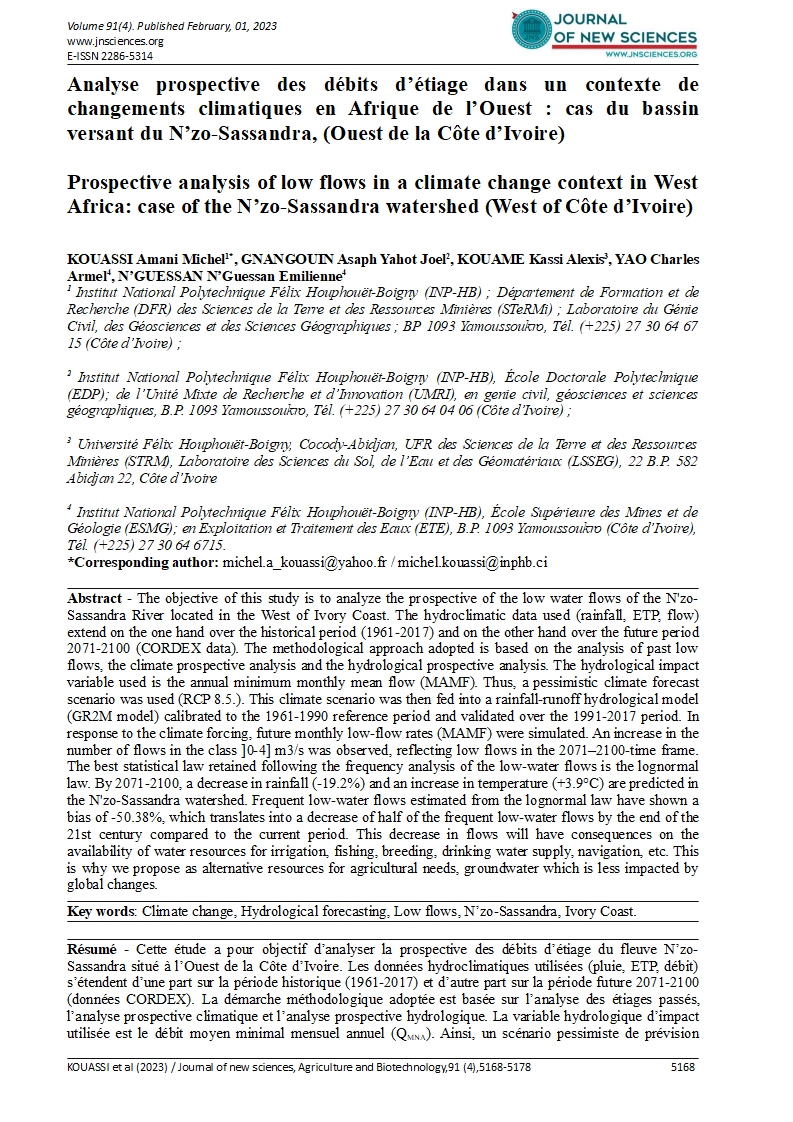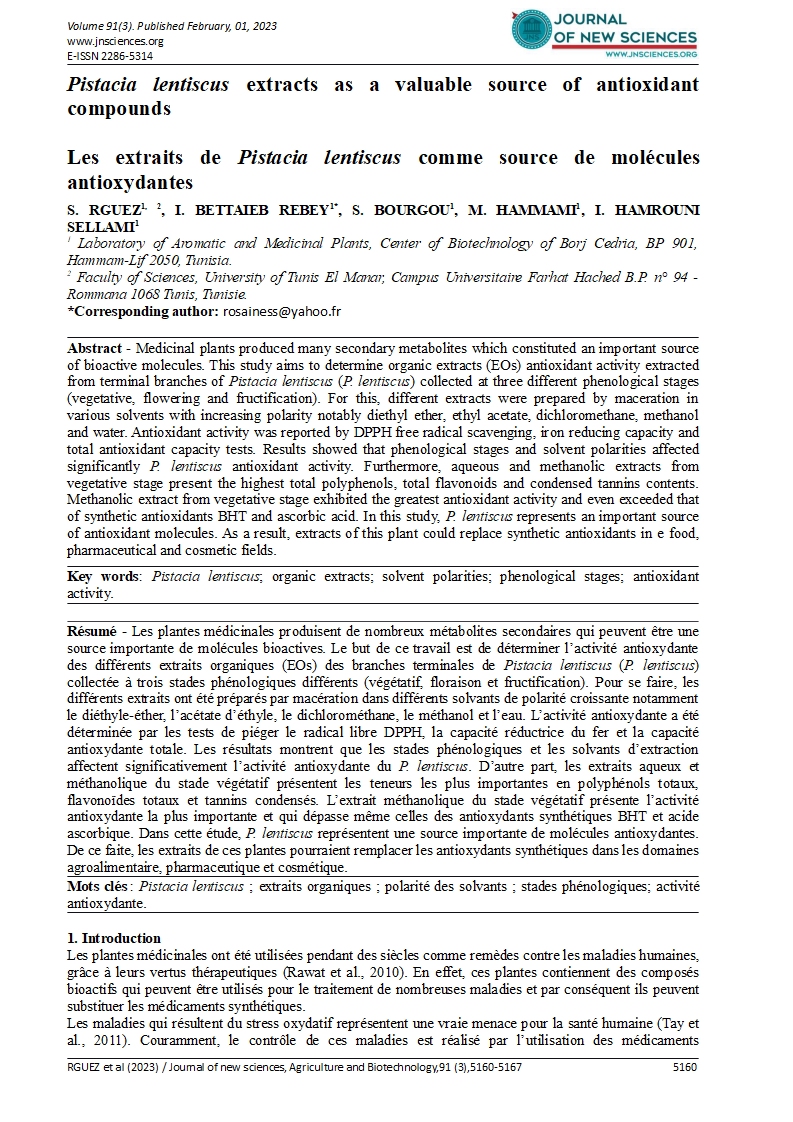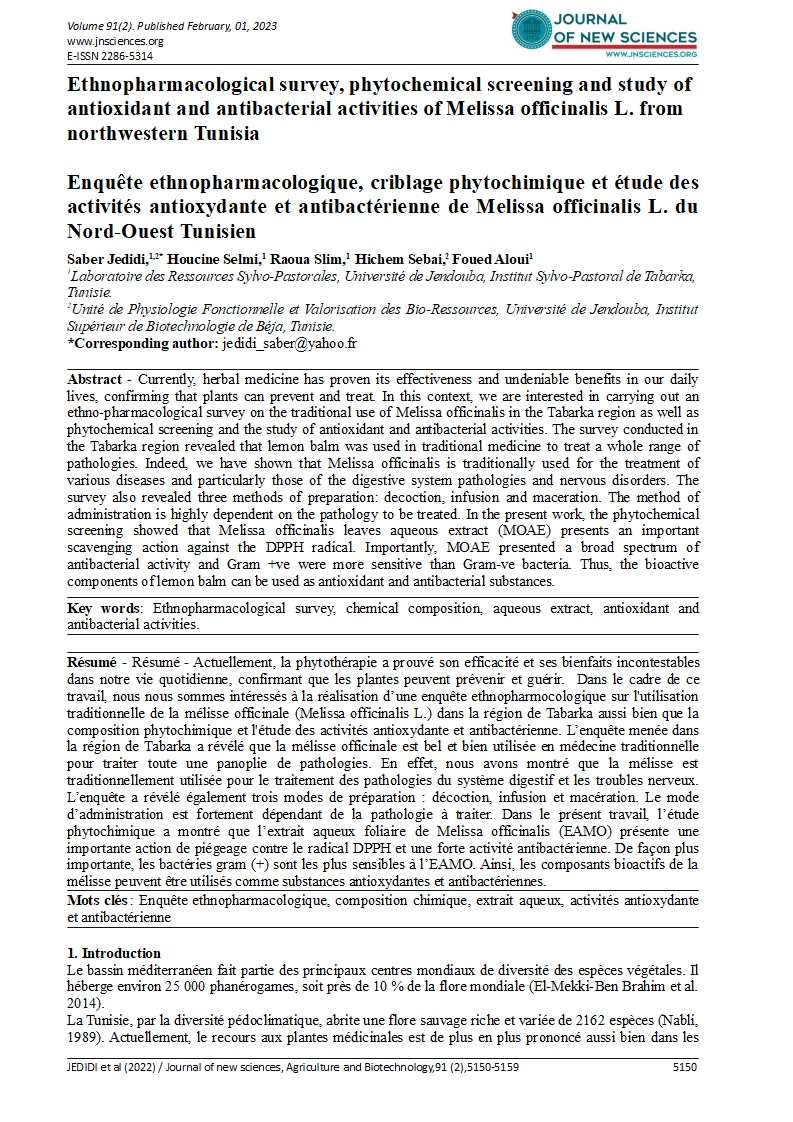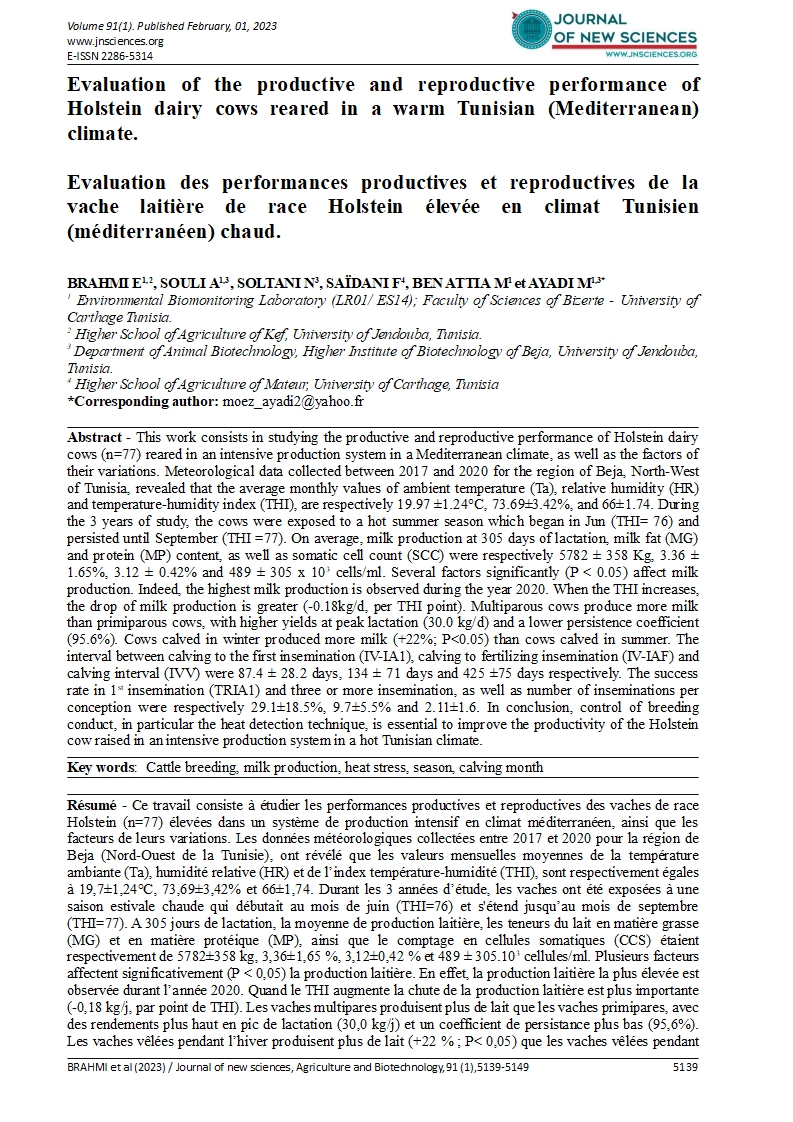- Category: Volume 91
- Hits: 3976
Prospective analysis of low flows in a climate change context in West Africa: case of the N’zo-Sassandra watershed (West of Côte d’Ivoire)

Analyse prospective des débits d’étiage dans un contexte de changements climatiques en Afrique de l’Ouest : cas du bassin versant du N’zo-Sassandra, (Ouest de la Côte d’Ivoire)
KOUASSI Amani Michel1
GNANGOUIN Asaph Yahot Joel2
KOUAME Kassi Alexis3
YAO Charles Armel4
N’GUESSAN N’
Guessan Emilienne4
1 Institut National Polytechnique Félix Houphouët-Boigny (INP-HB) ; Département de Formation et de Recherche (DFR) des Sciences de la Terre et des Ressources Minières (STeRMi) ; Laboratoire du Génie Civil, des Géosciences et des Sciences Géographiques ; BP 1093 Yamoussoukro, Tél. (+225) 27 30 64 67 15 (Côte d’Ivoire) ;
2 Institut National Polytechnique Félix Houphouët-Boigny (INP-HB), École Doctorale Polytechnique (EDP); de l’Unité Mixte de Recherche et d’Innovation (UMRI), en genie civil, géosciences et sciences géographiques, B.P. 1093 Yamoussoukro, Tél. (+225) 27 30 64 04 06 (Côte d’Ivoire) ;
3 Université Félix Houphouët-Boigny, Cocody-Abidjan, UFR des Sciences de la Terre et des Ressources Minières (STRM), Laboratoire des Sciences du Sol, de l’Eau et des Géomatériaux (LSSEG), 22 B.P. 582 Abidjan 22, Côte d’Ivoire
4 Institut National Polytechnique Félix Houphouët-Boigny (INP-HB), École Supérieure des Mines et de Géologie (ESMG); en Exploitation et Traitement des Eaux (ETE), B.P. 1093 Yamoussoukro (Côte d’Ivoire), Tél. (+225) 27 30 64 6715.
DOI: https://doi.org/10.55416/sunb.jns01.2302.09104
Abstract - The objective of this study is to analyze the prospective of the low water flows of the N'zo-Sassandra River located in the West of Ivory Coast. The hydroclimatic data used (rainfall, ETP, flow) extend on the one hand over the historical period (1961-2017) and on the other hand over the future period 2071-2100 (CORDEX data). The methodological approach adopted is based on the analysis of past low flows, the climate prospective analysis and the hydrological prospective analysis. The hydrological impact variable used is the annual minimum monthly mean flow (MAMF). Thus, a pessimistic climate forecast scenario was used (RCP 8.5.). This climate scenario was then fed into a rainfall-runoff hydrological model (GR2M model) calibrated to the 1961-1990 reference period and validated over the 1991-2017 period. In response to the climate forcing, future monthly low-flow rates (MAMF) were simulated. An increase in the number of flows in the class ]0-4] m3/s was observed, reflecting low flows in the 2071–2100-time frame. The best statistical law retained following the frequency analysis of the low-water flows is the lognormal law. By 2071-2100, a decrease in rainfall (-19.2%) and an increase in temperature (+3.9°C) are predicted in the N'zo-Sassandra watershed. Frequent low-water flows estimated from the lognormal law have shown a bias of -50.38%, which translates into a decrease of half of the frequent low-water flows by the end of the 21st century compared to the current period. This decrease in flows will have consequences on the availability of water resources for irrigation, fishing, breeding, drinking water supply, navigation, etc. This is why we propose as alternative resources for agricultural needs, groundwater which is less impacted by global changes.
Key words: Climate change, Hydrological forecasting, Low flows, N’zo-Sassandra, Ivory Coast.



